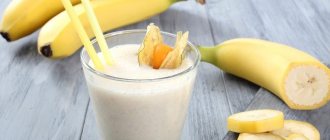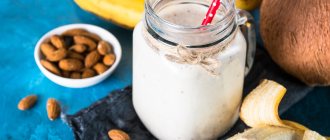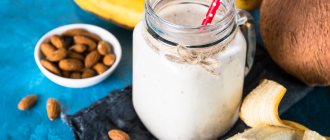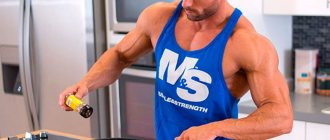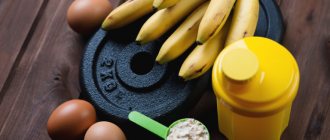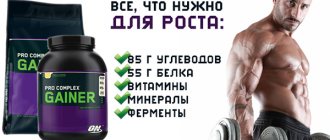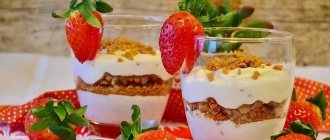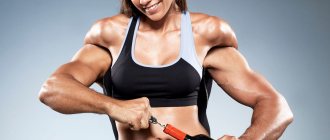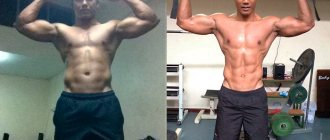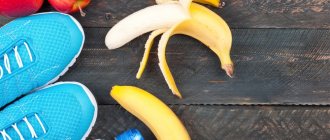Many of us are concerned about losing weight. At the same time, as you know, you need to eat less and move more. We sign up for the gym, start training and stop eating. Of course, we don’t stop at all - after all, the body must get energy and building materials for our beautiful muscular body from somewhere. We eat wisely, in portions, in a balanced manner, etc. Well, whoever the Almighty Fitness tells you to do. But it often feels like you’re not eating at all. You can’t do it in the evening, you can’t do it during the day, in the morning if you have time, even at night you can’t. And when is it possible? Not a spoonful of undercooked buckwheat with a leaf of lettuce and a piece of dry breast, but the proper way - wrap some borscht with sour cream, a cutlet with potatoes...
Rejoice fellow citizens - such a time exists! There is a time when you can not only eat, but even actually eat. And you won't get anything for it. Not a couple of penalty hours of cardio, not extra centimeters in the waist - nothing at all. Can you imagine? This time is called the “protein-carbohydrate window.” Although sometimes it is called the “carbohydrate window”, “anabolic window”, etc. It comes immediately after training and lasts about twenty minutes. So the main thing is to be on time. Kidding. There is no unambiguous and accurate data on the duration of the protein-carbohydrate window; most often it is believed that it takes about 1 hour before training and an hour and a half after. It would seem like a lot of time. But the training itself also fits inside. You won't be able to eat instead of exercising - it will be completely unsportsmanlike. Although, if you are not an athlete, then you can.
Protein-carbohydrate window[edit | edit code]
This article is an adapted translation of the 2013 scientific review “Nutrient timing revisited: there is a post-exercise anabolic window” from the Journal of the International Society of Sports Nutrition. By Alan Albert Aragon and Brad Jon Schoenfeld.
Protein-carbohydrate or anabolic window
is a hypothetical metabolic state in which the body is in dire need of nutrients (primarily protein[1] and carbohydrates) that, when consumed at specific times, lead to maximum anabolic response and muscle growth,[2] and just as importantly, it does not lead to the formation of fat mass.[3] In English, the term “Nutrient timing” is often used, or the strategy of eating around training time. Typically before and after training.
Many authors claim that this approach is the most productive for creating a beautiful body. It is also postulated that nutrition during the protein-carbohydrate window plays a more important role than all other food consumed during the day.
Theoretically, taking a certain ratio of proteins and carbohydrates leads to the initiation of restoration processes in muscle fibers damaged during physical training, as well as the replenishment of energy reserves, and this occurs according to the principle of supercompensation, leading to an improvement in body composition (the ratio of fat and dry mass), as well as increasing sports (strength) performance. Some researchers use the term “window of opportunity,” which describes a limited period of time after training that provides the opportunity for rapid recovery and growth with proper nutrition. Many authors emphasize that the significance and even the presence of the protein-carbohydrate window can vary significantly depending on a number of factors.
However, the significance and, most importantly, the reliability of these judgments have not yet been tested. Moreover, recent scientific evidence has called into question the classical concepts of the protein-carbohydrate window, namely the relationship between nutrient intake after exercise and anabolic processes.
Alan Albert Aragon and Brad Jon Schoenfeld set themselves the following tasks:
- Conduct a literature search on this issue
- Draw scientifically based conclusions on the basis of which to build recommendations for obtaining the maximum anabolic response during strength training.
The original article is located at:
https://www.jissn.com/content/10/1/5
Sportswiki contains translations of the most important theses and practical information. Most of the literary research, considering numerous biochemical and physiological aspects, was omitted for its absolute practical unsuitability. A list of the main studies can be found in the figure to the right.
Scientific data[edit | edit code]
List of Key Studies and Findings
Despite claims that immediate post-workout eating is important for maximizing muscle hypertrophy, the scientific support remains fragile. This hypothesis is based on the assumption that when training is performed on an empty stomach, muscle protein breakdown occurs because a negative amino acid balance develops, which persists after training, even though exercise stimulates muscle protein synthesis.[4]
Thus, if training occurs immediately after sleep, there is a need to urgently provide the body with nutrients, namely proteins and carbohydrates. This is required to accelerate the synthesis of muscle proteins and suppress proteolysis, or in other words, to switch catabolic processes to anabolic ones.
The question arises as to how eating before training affects nutrition after training, since almost all athletes try to eat 1-2 hours before physical activity. Tipton et al[5] determined that relatively small doses of amino acids (6 g) consumed immediately before exercise can significantly increase the concentration of amino acids in the blood and muscles by approximately 130%, which lasts for about 2 hours. Later studies by Fujita[6] and Tipton[7] showed that taking 20 g of whey protein before training increased amino acid concentrations by up to 440%, which persisted for about 3 hours after training. Thus, the urgency to consume protein and carbohydrates immediately after exercise to suppress catabolism is significantly reduced, since amino acid levels are still quite high at this point. The next meal can be delayed by 1-2 hours without harming muscle growth and recovery.
On the other hand, there is a category of athletes who train before lunch or after work. In this case, the last meal is taken 4-6 hours before the start of the training. And if it is not possible to take food or a protein-carbohydrate drink before training
, you should get your nutrients as soon as possible immediately after finishing your training session. Layman [8] based on the postprandial level of amino acid metabolism found that the anabolic effect of food lasts approximately 5-6 hours. However, further studies in rats[9][10] and humans[11][12] showed that the anabolic effect lasts less, lasting approximately 3 hours, despite the fact that the high amino acid levels last longer. Based on this, it was assumed that accelerated muscle protein synthesis may stop much earlier, after which the remaining free amino acids are used for other needs.
Based on these data, it can be concluded that when training is performed more than 3-4 hours after the previous meal, it is advisable to take protein (at least 25 g) as soon as possible to prevent catabolic processes. However, as mentioned above, the need for nutrients before training is reduced if after training there is a heavy intake of protein-carbohydrate foods.
Level of professionalism of athletes and age[edit | edit code]
Scientists have identified significant differences in metabolism among athletes of different age groups and different levels of physical fitness. Burd et al[13] reported that novices to strength training exhibited high rates of mitochondrial and myofibrillar protein synthesis, whereas more experienced lifters showed a predominance of only myofibrillar protein synthesis. This suggests a greater need for protein and BCAAs before and after exercise in more elite athletes.
In addition to fitness level, age has a significant impact on metabolic processes. Older athletes are characterized by so-called “anabolic resistance,” which is manifested by less responsiveness to amino acids and strength training in general.[14] The mechanisms underlying this phenomenon remain unclear, but there is clear evidence that younger adult athletes showed a maximum anabolic response at a dose of 20 g of egg protein, while a dosage of 40 g led to an increase in amino acid expenditure for energy needs, without an increase protein synthesis in muscles.[15] In contrast, Yang Y et al[16] determined that a dose of 40 g of egg protein produced a greater anabolic effect in older athletes. These data confirm that older adults require larger doses of protein to achieve maximum muscle growth.
Post-workout nutrition
I think everyone already knows that when we lift, our muscles deplete glycogen levels because we require a large amount of energy. ⛔ There is one BUT : it is important to remember that glycogen reserves are formed in the body during the day . That is, in order for the glycogen level to become maximum after training, it takes at least 24 hours. For this process to be successful, you should consume carbohydrates frequently and evenly throughout the day , and not choke on carbohydrates immediately after training. Its reserves will no longer increase, and the evil uncle catabolism will not eat your muscles. Again, proper nutrition is extremely important: the total quantity and quality of micro- and macronutrients.
So remember: the benefit of taking a serving of carbohydrates after exercise to close the carbohydrate window is negligible and has little effect on accelerating the body's energy replenishment. It is much more important to maintain the total daily level of carbohydrates and calorie intake for gaining weight or losing weight.
Is it possible to lose weight and gain muscle at the same time?
As we found out, immediately after exercise, within 20-40 minutes, in theory, you do NOT need to replenish your nutrient reserves. And if in practice you want to eat? Tolerate? No way ! It doesn't have to be a full meal. In this case, the simplest products that can be consumed quickly are suitable.
YOU CAN'T FAST 2 HOURS AFTER WORKOUT! I really regret it and remember with a shudder the days when I didn’t know this. I remembered this song of a lonely whale in my stomach and constant fatigue for a long time. It should be both carbohydrates and proteins. You can eat a banana and protein/natural (I emphasize, NATURAL, all sorts of Danones and miracles are harmful) yogurt.
If you’re dying of hunger, then (eat more before training) you can eat it immediately after class while you’re driving home. Do you live close and can bear it? Then calmly go and eat normally (the classic combination of protein and carbohydrates: it can be porridge or durum pasta with a portion of protein (chicken, eggs, fish, etc.), whenever you want, don’t go crazy and measure this unfortunate event with a stopwatch carbohydrate window.
By the way : this does not mean that you can eat whatever your heart and stomach desire. Your post-workout snack should be included in your daily routine .
Granola bars: checking for sugar
Protein shake
No protein? No problem - here's a recipe for a protein shake that you can make at home.
- 300-400 ml milk (1.5% fat)/natural yogurt without additives/kefir;
- 250 grams of cottage cheese (low-fat);
- 1 medium banana;
- honey (2 tbsp);
- oatmeal (2-3 tablespoons);
- berries (can be frozen) / fruits;
- cinnamon/cocoa (0.5 teaspoon).
Mix everything in a blender and enjoy
